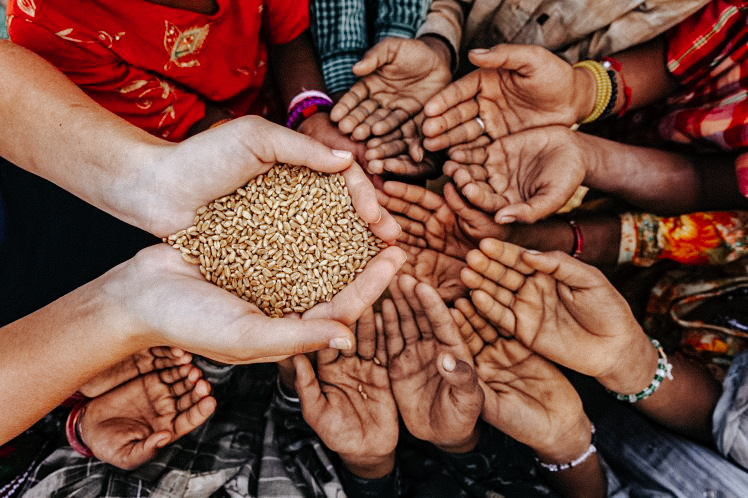As of Feb. 19, 2021, the United States formally rejoined the Paris Climate Agreement, nearly four years after former President Donald Trump announced that the country would withdraw from it.
What does rejoining the Paris Climate Agreement mean for the United States and for the rest of the world? In addition to the clear implications that this has for the climate, it also has significant implications for human health. The U.S. Global Change Research Program has identified seven ways in which climate change has, and will continue to, impact human health, including an increasing temperature-related and vector-borne illnesses, worsening air quality, and decreasing food security.
Climate change, food insecurity, and human health are intimately interwoven, creating a complex problem with a complex solution.
What is Food Insecurity?
The United States Department of Agriculture (USDA) defines food insecurity as a “lack of consistent access to enough food for an active, healthy life”. While succinct, this definition fails to capture the complexity of the problem.
In the United States, the least food secure households are those with single women with children, with Black and Hispanic individuals, with an income to poverty ratio of under 1.00, that are in principal cities or just outside metropolitan areas, and that are in the Southern region of the United States. Overall, individuals who do not have the ability or resources to meet their basic needs are at the greatest risk of experiencing food insecurity.
The aforementioned groups already experience issues such as low wages, lack of affordable housing, and high medical costs. Taken together, these, and other, factors are known as social determinants of health (SDH). Mitigating food insecurity will require that these SDH are addressed as well.
There are four levels of food insecurity, depicted in the diagram below. The top two levels place an individual in the “food secure” category, while the bottom two levels place a person in the “food insecure” category.
How are Climate Change and Food Insecurity Related?
Climate change affects food availability, access, and utilization. Changing weather patterns, which include increases in temperature, rainfall, and extreme weather events, do not bode well for crops, which are damaged or destroyed in these circumstances. The reduced availability of food results in a price inflation of the food that is available. The price spikes put low-income households in the most vulnerable positions, as the issues caused by climate change and food insecurity often compound upon pre-existing problems.
Climate change also affects the nutritional value of food – higher carbon dioxide concentrations in the atmosphere result in decreased concentrations of protein, zinc, and iron in crops. Livestock rely on many of the same sources for nutrition as humans, so their ability to produce meat and/or milk is compromised, leaving humans with fewer options for nourishment.
What Implications Does Food Insecurity Have for Health?
Children, non-senior adults, and seniors are all impacted by the ramifications of food insecurity, albeit in slightly different ways. For instance, children experiencing food insecurity are at an elevated risk of some birth defects, cognitive problems, anemia, and aggression. They are also at a greater risk of being hospitalized and have poorer general health than their food secure counterparts. In non-senior adults, conditions including diabetes, hypertension, hyperlipidemia, and mental health issues occur with increased prevalence in food insecure populations. Food insecure seniors are more likely to be in poorer overall health and are more likely to suffer from depression than seniors who are food secure.
What Can You Do About Food Insecurity?
Fortunately, there are ways that you can help mitigate the effects of both climate change and food insecurity, thereby increasing the health and well-being of food insecure individuals.
- Support Grassroots Organizations and NGOs: Support farmer’s markets, community gardens, and co-ops in your area, as these groups are directly working to address community hunger.
- Food Donation Drives: In addition to asking for canned food donations, it can be helpful to request monetary donations because this allows your local food bank to purchase the food they need in bulk, and often at a lower cost. It is, however, important to note that food banks are not a panacea for food insecurity. Read more about this in “Food Banks: The Band-Aid Solution”.
- Support School Meal Programs: In the United States, the National School Breakfast and Lunch Programs work to provide free or reduced-price meals to nearly 30.1 million children across the country. Keep any eye out for any legislation that would cut food aid to vulnerable children and families both domestically and internationally.
- Reduce Meat Consumption: 40% of grain crops go towards feeding livestock and fish, so if that grain was instead given to humans, it would alleviate the hunger of nearly 925 million people worldwide. Actions as simple as reducing red meat intake from multiple times a week to a few times a month, replacing red meat with chicken, which has a lower environmental impact, or replacing it with grains, fruits, and vegetables can make a significant difference.
- Increasing Soil Carbon Sequestration: From a climate change perspective, there are certain farming practices, such as crop rotation, cover cropping, and residue management, that preserve increased levels of carbon dioxide in the soil. These practices have been found to result in greater crop yields as well. Overall, these practices keep the soil healthy and reduce greenhouse gas emissions, while also increasing crop yields.
- Beef. It’s What’s Not for Dinner. – Plant-Based “Meat” and the Climate Crisis - January 16, 2022
- Activism or Slacktivism? Where ‘The Activist’ on CBS Went Wrong - September 17, 2021
- Combating Climate Change: The Great Green Wall - July 20, 2021
